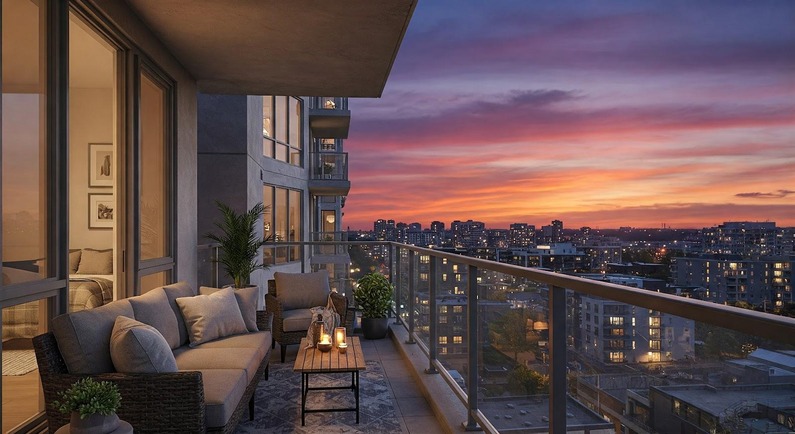Ensuring balcony safety in multi-family housing isn’t just about aesthetics—it’s about legal compliance and protecting lives. If you’re a board member or property manager of a condominium association in California, understanding SB 326 balcony inspections is critical. This law, officially known as California Civil Code Section 5551, requires regular inspections of elevated exterior elements in HOA-managed buildings.
In this article, we’ll break down exactly what SB 326 means for you, the structures it covers, the inspection requirements, and what happens if your HOA doesn’t comply. We’ll also explore the many benefits of proactive inspections and help you find the right professionals—like West Coast Deck Inspections—to ensure your property stays safe, functional, and legally compliant.
What is SB 326?
SB 326 is a California state law passed in 2019 in response to several tragic accidents involving failing balconies and decks in multi-unit residential buildings. It mandates that HOAs in buildings with three or more units must conduct structural inspections of certain elevated exterior elements (EEEs) that are primarily constructed from wood or wood-based products.
The law requires:
- A first inspection by January 1, 2025
- Follow-up inspections every nine years
- Inspection reports that document the condition of these components and identify any needed repairs
The intent of the law is clear: identify and resolve safety risks before they result in injury, death, or major liability for homeowners associations.
Why SB 326 Was Passed
SB 326 was introduced after the 2015 balcony collapse in Berkeley, CA, which claimed six lives and injured seven more. The tragedy was caused by wood rot in the balcony supports—a preventable issue that went unnoticed until it was too late.
Following investigations, it became clear that there was no systematic requirement for inspecting these types of structures. California lawmakers responded by implementing laws like SB 326 for condos and SB 721 for apartments, both of which focus on balcony safety inspections and ongoing maintenance.
By mandating regular structural reviews, the state aims to catch early warning signs like dry rot, water damage, or substandard construction that could otherwise go undetected.
What Structures Are Affected?
The law applies specifically to exterior elevated elements that meet all three of the following conditions:
- Are elevated more than six feet above ground
- Are exposed to weather
- Are primarily constructed of wood or wood-based products
Types of Elevated Elements Included
- Balconies – including cantilevered, supported, or enclosed balconies
- Decks – common recreational or private-use spaces
- Walkways – elevated pathways or breezeways
- Stairways – exterior stairs that connect units or building levels
These elements are often part of the shared infrastructure in a community, making them the HOA’s responsibility to inspect and maintain.
Common Areas and Exclusive Use Areas
SB 326 includes both:
- Common areas, such as shared balconies and community walkways
- Exclusive use common areas, like unit-specific balconies that are used privately but maintained by the HOA
This makes it essential for community managers and boards to understand their maintenance obligations under their governing documents.
SB 326 Inspection Requirements
The law outlines specific steps that HOAs must follow to remain compliant:
- Hire a Qualified Inspector
Inspections must be performed by a licensed structural engineer or architect with experience in building safety assessments. - Inspect a Statistically Significant Sample
The inspector must evaluate a representative sample of EEEs to identify both visible and concealed damage. - Perform Visual and Probing Examinations
Inspections can include non-destructive testing, borescope evaluations, and infrared scanning to detect hidden deterioration. - Document the Findings
A written report must include:
- The condition of the elements
- Any signs of structural weakness
- Required or recommended repairs
- A timeline for addressing deficiencies
- Distribute the Report
Reports must be:
- Delivered to the HOA board
- Retained in the HOA’s records for at least two cycles
- Shared with homeowners upon request
- Schedule Repairs
If repairs are deemed necessary, they must be initiated within 120 days and completed without unreasonable delay. - Maintain Records
HOAs must retain inspection documents and ensure the findings are available for future inspectors to assess changes over time.
This process ensures a historical record of the property’s condition and provides legal protection for the HOA.
Consequences of Non-Compliance
Choosing to delay or ignore SB 326 inspections can have significant ramifications for an HOA, including:
Legal and Financial Risks
If an incident occurs due to an uninspected or unrepaired structure, the HOA may be found negligent, leading to expensive litigation, damage claims, or court-mandated repairs.
HOA Liability and Potential for Fines
City and county enforcement agencies can issue citations or impose fines for failing to comply with state-mandated inspection timelines. The HOA may also be required to perform emergency repairs at a higher cost.
Insurance Implications
Non-compliance can impact property insurance:
- Insurers may refuse to cover claims related to uninspected elements
- Premiums may increase due to perceived risk
- Policies might require proof of SB 326 compliance for renewal
Avoiding these consequences starts with staying ahead of the inspection deadline and partnering with the right inspection provider.

Benefits of Proactive Balcony Inspections
Staying compliant with SB 326 offers more than just legal protection—it delivers real value to communities:
Ensures Resident Safety
Routine inspections catch issues like dry rot, rusted connectors, or unstable railings before they cause injury. This peace of mind is priceless for residents and building owners alike.
Prevents Costly Repairs
Early detection of damage leads to more affordable fixes. A small leak, if left unchecked, can evolve into a full structural failure that requires thousands of dollars to resolve.
Maintains Property Value
A well-maintained building commands higher property values. Routine inspections protect your asset and reassure buyers that your community is well-managed.
Supports SB 326 Compliance
By meeting inspection timelines and implementing recommended repairs, your HOA demonstrates diligence and avoids legal repercussions.
Extends the Lifespan of Building Materials
Periodic reviews and minor maintenance help prolong the use of expensive structural components, reducing the need for premature replacements.
Builds Trust with Homeowners and Residents
Transparent communication about safety measures fosters a sense of trust, accountability, and professionalism within your community.
Choosing the Right SB 326 Inspector
Selecting the right SB 326 inspection company is critical. Here’s what to look for:
- Licensed and Qualified Professionals
Confirm the company employs licensed structural engineers or architects per SB 326 requirements. - Proven Experience
Look for firms with a strong portfolio of completed HOA balcony inspection California projects. - Specialized in Elevated Exterior Elements Inspection
General contractors may lack the nuanced knowledge required. Choose specialists who focus on EEEs and structural balcony inspection California standards. - Transparent Reporting Process
Ensure they deliver actionable reports with photos, repair priorities, and clear timelines. - Local Knowledge
Companies familiar with California building codes, climate challenges, and municipal regulations will streamline your compliance efforts. - Good Reputation and References
Read reviews, ask for references, and look at case studies from other successful inspections.

Where to Get Your SB 326 Inspections in California
For trusted, thorough inspections that keep your community safe and compliant, West Coast Deck Inspections is a leading choice. Serving HOAs throughout California, they specialize in SB 326 inspections and structural assessments of balconies, decks, and other elevated exterior components.
Their team of licensed engineers provides:
- Visual and intrusive inspections
- Compliance-focused reports
- Project planning for repair work
- Guidance through the full SB 326 process
Whether you manage a small HOA or a large multi-building development, West Coast Deck Inspections is committed to helping you meet your responsibilities with confidence.
Visit West Coast Deck Inspections to learn more or schedule your SB 326 inspection today.
Stay Ahead of the Deadline—Act Now
The SB 326 inspection deadline is approaching, and with it, the responsibility to protect your residents, property, and board members from risk. Taking action now gives your community time to plan, budget, and execute repairs without the stress of last-minute decisions. Partner with a professional team like West Coast Deck Inspections, and ensure your inspections are done right—the first time. Proactive, informed decisions today will lead to safer, stronger communities tomorrow.
